

Ju 388J

The failure of the "Bomber B" program left the Luftwaffe in a situation where much of its bomber, reconnaissance and Zerstorer aircraft were rapidly approaching obsolescence. They needed an aircraft capable of much higher operational ceilings and speeds and needed it as quickly as possible. The Ju 388 offered the required increment in performance without disrupting existing production arrangements. Known as the Hubertus project, the Ju 388 shared a common airframe with the Ju 188 and in the case of the L model the identical pressurized forward fuselage as the Ju 188S and T. The L version was a long range reconnaissance version. The primary difference between the L and K which was the bomber version was that the ventral pannier contained cameras and extra fuel while on the bomber version it was set up as a bomb bay. Two night fighter prototypes were built the for the proposed J series, the V2 was the only one equipped with both the radar and weapons systems that were proposed.
The Kit
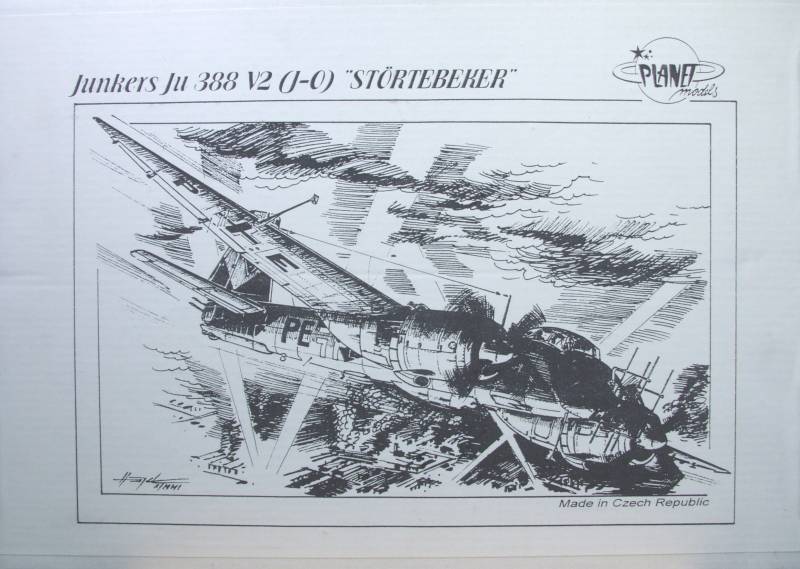
The Planet Models Ju 388J is a resin kit with vacuum formed canopies. It comes in a sturdy box of corrugated cardboard with all of the parts packed in a heat sealed compartmented bags. The box has a typical Planet models black and white rendition of the aircraft. My impression of this kit parallels that of the Ju 388L and K kit reviewed here. The surface detail is recessed and consists of panel lines and rivet detail and it rivals most injection molded kits in its rendition. I had to look hard to find any surface defects on the major pieces. There were a a few pin holes in one fuselage half near the top seam, on the bottom wing halves near the tips and a couple on the vertical stabilizer. However unlike the 388L kit the fuselage halves are equal length. The panel lines on the fuselage are extremely fine and may disappear under anything but the thinnest coats of paint. Same is true of the engine nacelles. The panel lines on the wings and horizontal tail surfaces were more well defined. The surface finish is smooth and has a semi gloss appearance.
The fuselage halves and wing halves are hollow cast. The wings appeared reasonably straight but the fuselage halves bowed outward. This should not be an issue as this will be pulled out when they are glued together. Casting blocks are small and should be easy to remove. What flash there was is paper thin and easy to clean up. The ailerons and elevators are molded separately but the rudder is cast with rest of the vertical tail unit. A couple things I found confusing with the tail unit, for one the panel lines are different on each side of the vertical unit, one side showing some rivet or fastener detail and the other side not. A similar situation was found on the horizontal stabilizers in that the panel lines were different from one side to the other and one side had rivet detail and the other did not. This may be totally correct but it seemed strange none the less.
The Cockpit is nicely detailed and should look great painted up. The detail was a bit soft, but I have seen worse on main stream kits. The seats include belts and harnesses and are very well done but the harnesses seemed a bit too thin. There really aren't engines supplied per se but you wouldn't be able to see them behind the cooling fans and the tight fitting cowls anyway. The wheel wells have some minimal detail. As with many resin kits the attachment points for the wings and tail could be better and would benefit from some additional support in the form of metal pins.The landing gear struts don't appear to have any reinforcements in them and that could be an issue with a model this heavy.
Many of the parts used in this kit are the same as the 388L kit. The fuselage halves are new as is the gun pannier for the bottom, the instrument panel. The kit also supplies all the all of the parts for the various radar antenna. While the main supports for the stag horn antenna are probably usable the smaller parts, while well molded will be almost impossible to clean up and incredibly delicate and would be best replaced with small gage wire and hypodermic tubing. The kit includes parts for two upward firing machine guns commonly used on night fighters.
Photos of the parts are shown below. The first photo shows the parts as the come in the box.
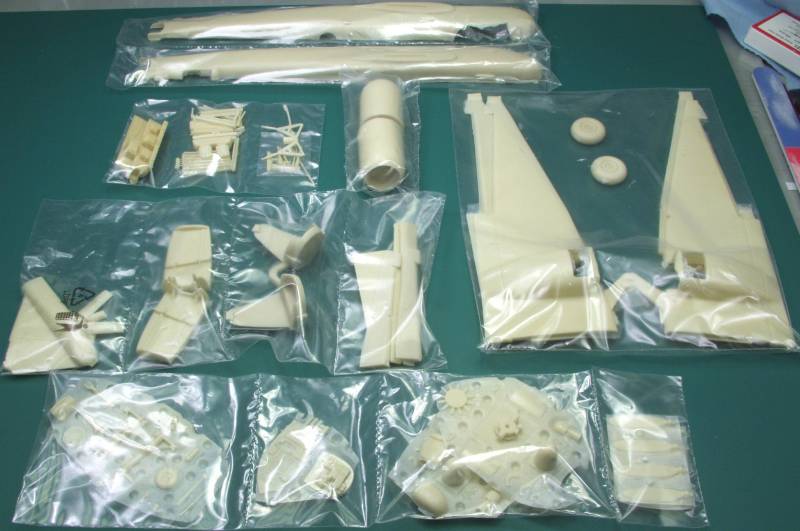
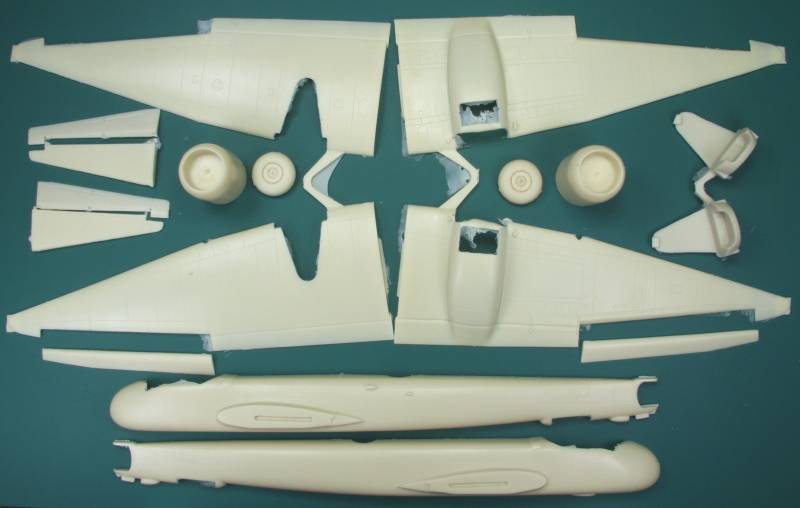
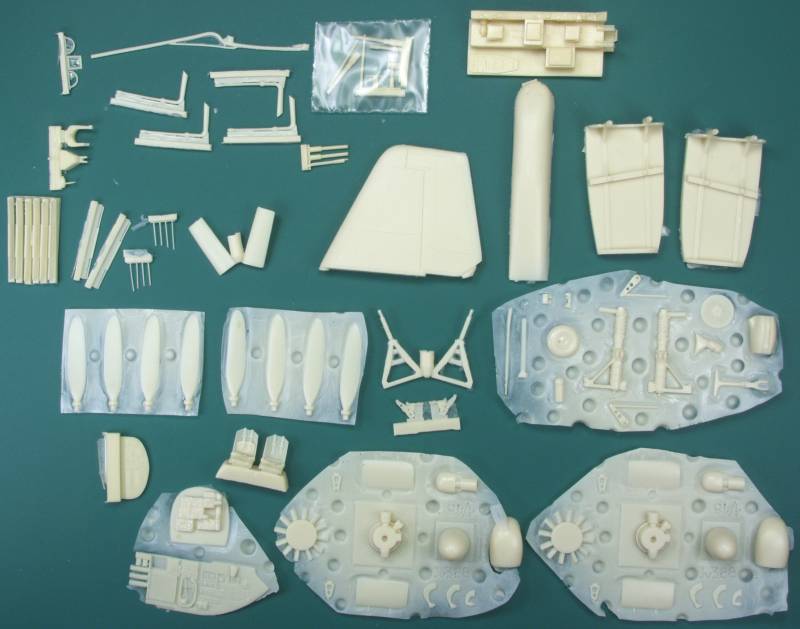
The clear parts are vacuformed and are not as clear as I would like. Hopefully they will look better with a coat of Future. They have well defined frames for easy painting and two complete sets are supplied which is always a plus. See photo below.
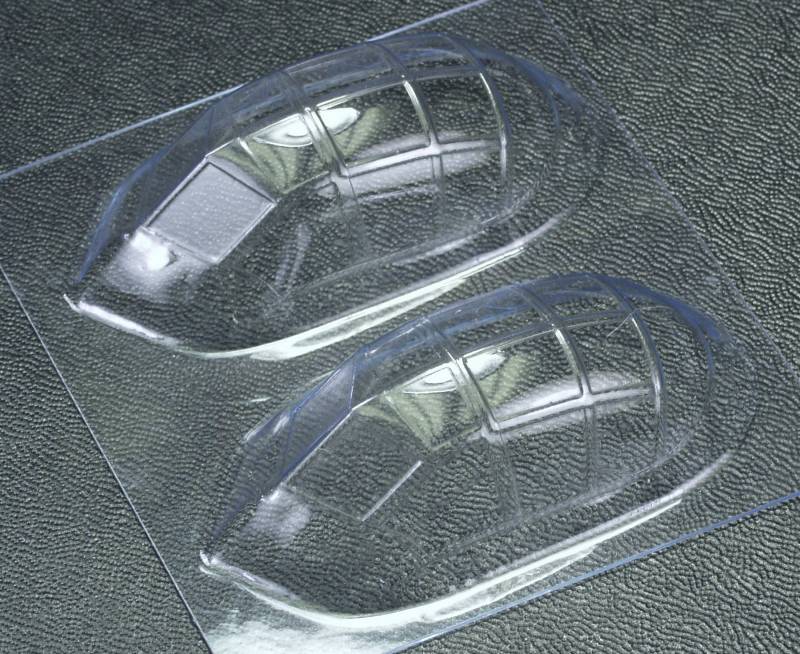
The decals appear thin and in register. Markings for one aircraft, the V2 are provided. The swastikas are the multi part type. There are only the basic decals, no stenciling is provided. Note a gamma shift was applied to the decal sheet to make the white more visible. See below.
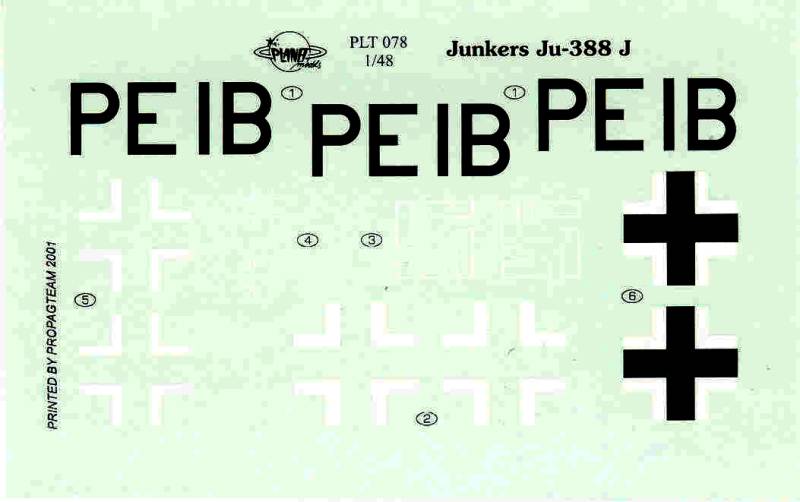
The instructions are printed on three A4 sized sheets
printed on both sides, side one has history in two languages and a
parts map, sides two, three, four and five are assembly diagrams and
side six has painting and marking diagrams. The painting instructions
show a standard paint scheme of RLM 70 and 71 over 65 with RLM 02
cowlings. The scheme seem a little odd for late war although the
aircraft probably spent more time on the ground than in the air. Photos
that I have found are difficult to discern any splinter pattern but
it's hard to tell.
After Market Goodies
Not much need for anything except for a little photo etch to dress things up. While there is no PE set specifically for the 388 I found many useful parts on the Eduard Zoom color set [FE400] which is for the 188A or E versions. A brief review and a photo of it may be found in the 188A review located here.
Conclusions
As I said at the beginning of this review I an mostly impressed with this kit. Cleaning up some of the parts will be a real test due to their small size and their fragile nature but nothing that some super glue couldn't fix. I would recommend substituting some metal for some of the parts for better strength. Otherwise I think that overall this may be an easier build than the Ju 88's and 188's that are injection molded and would recommend it to any one who has successfully completed other resin kits.
Links to kit build or reviews
A review/build can be found here for the L and K versions. There are none that I know of specifically for the J version.
References
"Junkers Ju 388" by Christoph Vernaleken and Martin Handig
"Black Cross Volume 2 Junkers Ju 288 / 388 / 488" by Karl-Heinz Regnat
Last updated 4/10/09